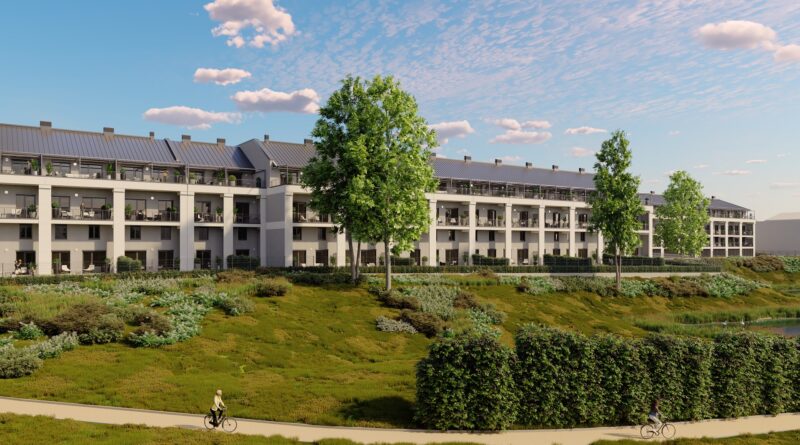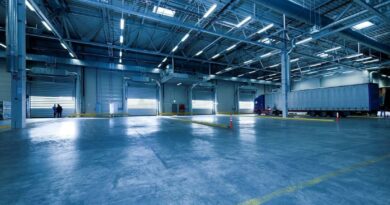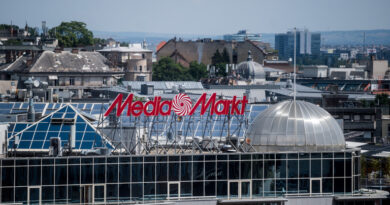Availability of industrialstock is quickly decreasing in Central Europe
The first six months of this year confirmed the interest of companies present in Central Europe for modern industrial properties. Strong demand and few new developments have resulted in fairly limited alternatives faced by parties interested in leasing them. The industrial stock vacancy rate in Central Europe (CR, Hungary, Poland and Slovakia) today stands at 11.8 percent on average. In some places, however, it has dropped under 5 percent. At the same time, vacancy rates between 10-12 percent are considered as healthy. “On a well operating market, such undersupply would motivate developers to quickly launch new development projects. The Central European market, however, still suffers from the restrictive financial policies applied by banks and their cautious positions in respect of financing new development projects. This has resulted in the distortion of the market – for example, Slovakia and its 2.5 percent vacancy rate represents an absolutely unique situation within Europe”, according to Ferdinand Hlobil, Head of the CE Industrial Team, Cushman & Wakefield.
Even in the Czech Republic the industrial stock vacancy rate has dropped under the ten percent mark. Apart from an increase in rents, this phenomenon may discourage new manufacturing and logistic companies from entering the market in certain selected locations.
“In all Central European countries with the exception of Hungary, the vacancy rate has been declining gradually ever since 2009. This decline can be expected to continue in the months to come as well. In the developed economies, such situation would attract the attention of politicians and communities aimed at improving their business environments. Their involvement may thus help cause a drop in unemployment in the given region, bring about new construction and other orders for the local firms, and recruit new tax payers”, says Ferdinand Hlobil. “Although we registered 21,7 % vacancy at the end of H1 2011, the outlook is still positive. We experi e nced high take-up in Hungary, 180,000 sqm in H1 out of which 48% renewals. Except of a BTS project in BILK for 2 occupiers, no new construction has started this year. And as developers are still very cautious – mainly due to the high vacancy rate, we do not expect any speculative development to be launched this year. Interesting factor is that the countryside has gained more importance – especially for production companies. The new Mercedes production base in Kecskemét and the Audi expansion in Győr attract further suppliers to the surrounding area but other north-eastern and north-western areas of the country are popular amongst manufacturing occupiers.” added Emília Tarró, Associate Head of Industrial department at Cushman & Wakefield, Budapest.
Leases
Following a comparison of the first six months of 2009-2011, this year’s first half comes out as by far the strongest of all – almost 1.5 million sq.m. of modern industrial stock were leased in the four Central European countries. This figure is higher than, for example, leases concluded during the entire year 2005. The first six months of 2011 are also very close to the results achieved in the entire years 2006 and 2009.
“The increased take-up has been mainly driven by manufacturing companies, which have been doing well, in particular, in the automobile industry. Retailers, too, have been striving for higher efficiency of their logistics operations, having centralised their warehouses and moved to modern premises that better suit their requirements. Also, expansion of inventories and relocation of warehousing from Western Europe seems to be the trend. This phenomenon is clearly visible on the Polish market, which has been capable of attracting international investors and chains”, says Ferdinand Hlobil.
New developments
The quantity of newly developed industrial stock in the first six months of this year lags way behind the long-term average. This year, 198,000 square metres of new industrial stock for lease have been developed in Central Europe. However, the development rate was roughly ten-times as high in the first six months of 2009. Over the past five years, the average development rate exceeded 1.5 million square metres per year. “The hardest affected are the markets in Hungary and Slovakia where no new projects have been developed this year as yet. Poland and the Czech Republic have recorded an increase as against last year but the figures still remain very low. Developers continue to build on the basis of pre-leases and are reluctant to launch any speculative developments, mainly due to limited access to financing”, says Ferdinand Hlobil.
Romania
Thanks to the size of the Romanian consumer market and potential interest in manufacturing and logistic development, the statistics will also include this country in future. At the moment, the Romanian market is still young and it is waiting for a permanent entry of any major international investments into land sites. With the advent of the crisis, Romania – as against Central Europe – was hit the hardest. Nevertheless, market stabilisation should re-start some major advancements. Take-up was 64,400 sq m in Romania in H1 2011 however no new stock was delivered in the same period of time. Vacancy droped to 7,3 per cent at the end of June a total stock is 948 622 sq m today. “Romania – with regards to the market environment – is the closest to the Central European countries. It is attractive for investors and developers as well as tenants. With to regards land sites, Romania is the least developed area as compared to the Central European region. At the same time, considering of its large population, it possesses some major potentials and opportunities to attract international investments”, says Ferdinand Hlobil.
Investment
Investor’s sector preferences saw a move from the retail to the office sector in H1 2011. Industrial investment volumes were also up significantly, from € 128 million to € 511 million, largely as a result of the VGP transaction. “Investment activity in Central Europe in H1 2011 continued to gain momentum, with € 2.09 billion invested in the core markets of Poland, Czech, Slovakia, Hungary and Romania. This suggests that total volumes for the region could reach € 4.8 billion by the year end,” says Charles Taylor, Partner at Cushman & Wakefield.
































